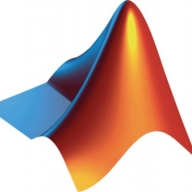

Polyspace Code Prover and Snyk compete in the comprehensive code quality solutions market. While Polyspace Code Prover excels in static code analysis, Snyk has an advantage with its security functionalities and development environment integration.
Features: Polyspace Code Prover offers precise static code analysis, crucial insights into code correctness, and reduced errors during development. Snyk provides powerful security scanning features, vulnerability assessments for open-source libraries, and container security. Users appreciate Snyk's continuous monitoring and analytics.
Room for Improvement: Polyspace Code Prover could improve by simplifying its deployment process, enhancing user interface and reducing configuration time. Snyk can improve by expanding its vulnerability database, refining its license checks, and enhancing customer support for complex issues.
Ease of Deployment and Customer Service: Snyk is noted for its easy deployment and efficient customer service, which integrates well into development ecosystems. Polyspace Code Prover requires a more substantial initial setup but is known for offering in-depth technical assistance.
Pricing and ROI: Polyspace Code Prover involves a significant upfront investment, promising long-term ROI through reduced bug-related costs and enhanced code reliability. Snyk offers scalable pricing, appealing to various business scales, with quick perceivable benefits in security.
| Product | Market Share (%) |
|---|---|
| Snyk | 6.1% |
| Polyspace Code Prover | 1.3% |
| Other | 92.6% |

| Company Size | Count |
|---|---|
| Midsize Enterprise | 1 |
| Large Enterprise | 6 |
| Company Size | Count |
|---|---|
| Small Business | 21 |
| Midsize Enterprise | 9 |
| Large Enterprise | 21 |
Polyspace Code Prover is a sound static analysis tool that proves the absence of overflow, divide-by-zero, out-of-bounds array access, and certain other run-time errors in C and C++ source code. It produces results without requiring program execution, code instrumentation, or test cases. Polyspace Code Prover uses semantic analysis and abstract interpretation based on formal methods to verify software interprocedural, control, and data flow behavior. You can use it on handwritten code, generated code, or a combination of the two. Each operation is color-coded to indicate whether it is free of run-time errors, proven to fail, unreachable, or unproven.
Snyk excels in integrating security within the development lifecycle, providing teams with an AI Trust Platform that combines speed with security efficiency, ensuring robust AI application development.
Snyk empowers developers with AI-ready engines offering broad coverage, accuracy, and speed essential for modern development. With AI-powered visibility and security, Snyk allows proactive threat prevention and swift threat remediation. The platform supports shifts toward LLM engineering and AI code analysis, enhancing security and development productivity. Snyk collaborates with GenAI coding assistants for improved productivity and AI application threat management. Platform extensibility supports evolving standards with API access and native integrations, ensuring comprehensive and seamless security embedding in development tools.
What are Snyk's standout features?Industries leverage Snyk for security in CI/CD pipelines by automating checks for dependency vulnerabilities and managing open-source licenses. Its Docker and Kubernetes scanning capabilities enhance container security, supporting a proactive security approach. Integrations with platforms like GitHub and Azure DevOps optimize implementation across diverse software environments.
We monitor all Application Security Tools reviews to prevent fraudulent reviews and keep review quality high. We do not post reviews by company employees or direct competitors. We validate each review for authenticity via cross-reference with LinkedIn, and personal follow-up with the reviewer when necessary.